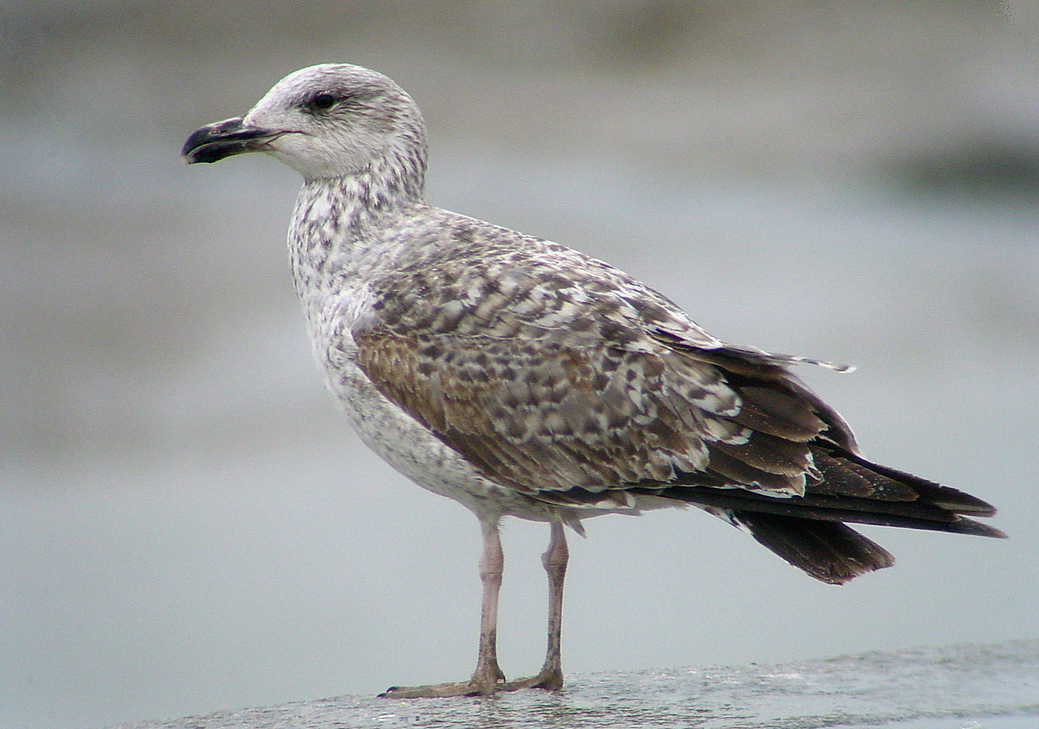 Yellow-legged
Gull - Larus michahellis
Yellow-legged
Gull - Larus michahellis
(last update: October 08 2013)
Coordinators:
Delfín González
Gabriel Martín
Antonio Gutierrez
Amir Ben Dov
Mars Muusse
Yellow-legged Gull michahellis 2CY, February 09 2003, Etaples / Boulogne-sur-Mer, France (50.42N,01.34E).
Typical 2CY michahellis which has
replaced the head, neck, breast, belly and flanks to second generation in
the first pre-basic moult last autumn. It
also included some wing-coverts and the upper tertials in this moult. In
the left wing all tertials are still juvenile, but in the right wing
tertials #1-2 have been replaced. Greater coverts #1-3, #5, #11, median coverts
#1-9,
lower lesser coverts #1-3, #5-7 and about 17 lesser coverts are second
generation as well, with the last moulted feathers showing broad fringes
(e.g. surprisingly the inner greater coverts).
The other wing-coverts, the tail feathers and tertials are still juvenile.
The rear feathers in the lowest row of scapulars are fresh second generation feathers with an
anchor pattern, a buffish base
and neat tips. At least two upper scapulars have been replaced
recently for greyish third generation feather, but the exact extend of
this replacement is hard to judge when the feathers are wet. In 2CY michahellis it's common to find birds
starting to replace upper scapulars to third generation feathers, while
the rear lowest scapulars have only very recently been replaced for second
generation feathers. By this stage, this individual shows first generation
feathers (remiges, rectrices, most wing-coverts), second generation
feathers (the head, body, most scapulars and some wing-coverts) and at the
same time third generation feathers (a few lower upper scapulars).
Note that the head and neck are by no way pure white, with dark streaking
concentrated around the eye and extending on the nape. In the hind-neck
streaks are bolder and create a neck-collar. The
dark bill starts to turn paler at the base by February.

